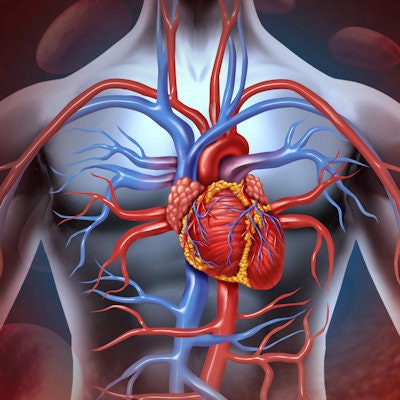
Thoracic surgery residents mastered complex cardiothoracic surgery skills after participating in a surgery simulation training program, according to a pair of papers in the Annals of Thoracic Surgery that examined the effectiveness of the virtual operating theater-based course and solicited trainees' experiences.
The study team from the University of North Carolina at Chapel Hill and seven other U.S. centers hypothesized that trainees could learn cardiac surgery more safely and efficiently by using simulation-based training. They found that overall performance in specific tasks and complete cardiac surgical procedures improved substantially after training.
The training was performed directly on tissue-based simulators and not the virtual reality training modules that are common in radiology. But the teaching is the same, said senior author Dr. Nahush Mokadam, director of the cardiothoracic residency program, co-director of heart transplantation, and program director for mechanical circulatory support devices at the University of Washington.
"It doesn't matter whether your training platform is a PowerPoint slide or a beating pig heart," Mokadam said. "What we did well here was create a comprehensive simulation curriculum where all the elements were discussed and broken down into step-by-step operations that could be applied to anything."
Creating safer surgeons
Many factors have combined to challenge cardiothoracic surgical training in recent years, noted lead author Dr. Richard Feins and colleagues. Restrictions on duty hours have limited direct clinical experience for trainees, and changes in general surgery training have led to fewer opportunities for open surgery experience, owing to the emergence of so many minimally invasive approaches to disease management.
"As recently as 15 to 20 years ago, when people began cardiothoracic surgery training, they had already been doing general surgery for five years as a resident and they had a pretty mature skill set," Mokadam said.
In a major center, residents might do two to three procedures a day. On top of that, there were fewer types of procedures to learn -- more routine bypass operations and fewer stent and valve implants than today, he said.
But now, "apprentice teaching in the operating room provides insufficient time to teach technical skills, has low tolerance for learning inefficiency, eliminates deliberate practice, and does not ensure exposure to rare but important adverse events," the authors wrote.
Beyond helping students master basic skills, simulation-based training can help them "prepare for adverse events and can help produce safer surgeons," they added (Ann Thorac Surg, August 25, 2016).
Tissue-based simulators
To address the training deficit, the centers developed a comprehensive cardiac surgery simulation curriculum based on expert guidelines but modified for each center. The six modules covered cardiopulmonary bypass, coronary artery bypass grafting, aortic valve replacement, massive air embolism, acute intraoperative aortic dissection, and sudden deterioration in cardiac function.
Each institution purchased a Ramphal cardiac surgery simulator (University of the West Indies). Porcine hearts came from commercial food suppliers. Training relied on principles of component task training per Sullivan et al and incorporated deliberate practice and observed repetition per Ericsson et al.
The modules emphasized repetition, supervision, progressive complexity of situations, and summative assessment, Feins and colleagues noted. The curriculum specified goals and objectives for each session, as well as equipment and supplies, conduct of the simulation, and assessment tools.
Surgery training focused initially on individual component tasks, while subsequent sessions combined multiple component tasks. The early modules served as the basis for adverse-event training in subsequent nodules. The training sessions were performed in order and weekly, to the extent possible, beginning with basic lessons and growing progressively more complicated.
"The last three modules specifically focused on rare events that in most people's career may never happen, but if they do happen, you have a model to respond," Mokadam said.
A battery of 21 assessment tools gauged performance on tasks, procedures, and component subprocedures using a five-point Likert scale, with 5 indicating full competence. Each task-specific assessment tool included several Likert items that addressed performance on skills such as "needle angle" or "needle holder use." The aortic valve replacement tool evaluated seven separate Likert items including root setup, valve excision, and suture placement.
At the completion of the study, a survey was administered to obtain insight into the initial experience of using the models as an educational tool. The survey results were published separately in the same journal, also on August 25. Participation in the anonymous survey was voluntary, and the collected data were coded for either faculty or residents.
Overall improvement
All 27 residents who participated in training showed improvement, resulting in excellent final scores in each module.
| Final scores after training | |
| Skill | Score (based on 5-point Likert scale), mean ± SD |
| Cardiopulmonary bypass | 4.80 ± 0.12 |
| Sudden deterioration in cardiac function | 4.76 ± 0.16 |
| Acute intraoperative aortic dissection | 4.52 ± 0.17 |
| Aortic valve replacement | 4.51 ± 0.20 |
| Coronary artery bypass grafting | 4.41 ± 0.19 |
| Massive air embolism | 0.68 ± 0.14 |
"A clearly defined, detailed curriculum was essential to the training's success, and with close communication among investigators, it resulted in a reasonably high level of compliance and uniformity," Feins and colleagues wrote. Two key factors were component task training and deliberate practice -- factors that cannot be provided in a real operating room.
The survey of experiences with the training also showed favorable reviews from both faculty and residents. Eighty-five percent of residents and 100% of faculty said they felt more comfortable with the resident skill set after training, and simulation of rare adverse events enabled the development of multidisciplinary teams to address them. The survey found that trainees had high opinions of all the modules and no unfavorable views.
The training also translated into improved confidence and performance by residents and faculty in the clinical operative setting, according to Mokadam et al.
A YouTube video on teaching cardiac procedures using the Ramphal simulator is available here.



















